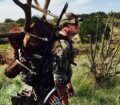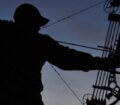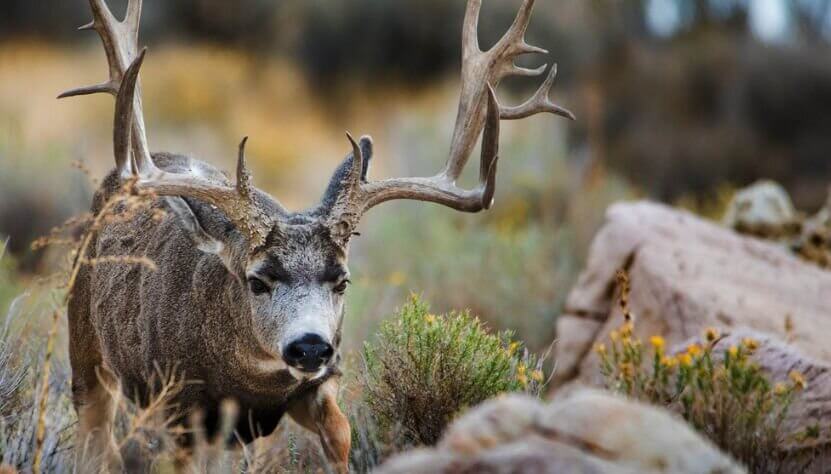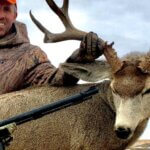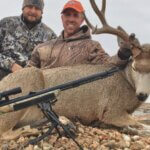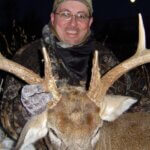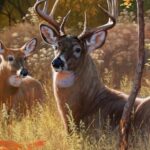Editor’s Note: Keith Pullins of Rapid City, South Dakota, has been hunting mule deer ever since he started walking – for about 30+ years. Pullins has taken over 25 mule deer with his bow and 30+ with his rifle. His best bowhunt mule deer scored 164 on Pope & Young (P&Y).
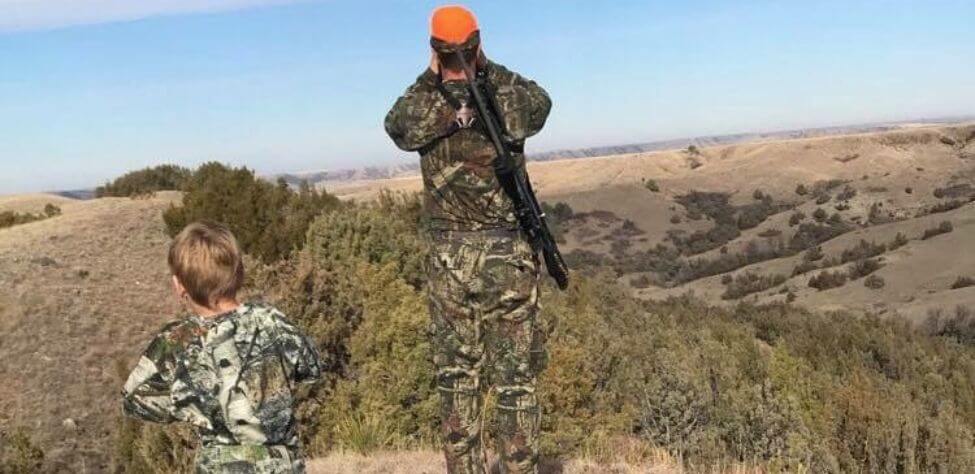
My best P&Y mule deer with a bow scored 164, which I named the Drainage Buck. I took him on public lands. I found a couple of high elevation points in this area that allowed me to get high and glass a large amount of open prairie. On the opening morning of archery season in South Dakota, my buddy, Dominic Heim, and I got on two points and spotted this buck grazing with three other bucks. When the three bucks split up, my buck went over a bit of rise and out of sight. Since he was the biggest of the bucks, I told Dominic, “I’m going to give you first crack at that buck. I’ll stay here and watch both ends of the drainage to see if the buck comes out.” Dominic went after this buck and walked the entire length of that drain but never saw or spooked that muley. When he returned, I told him, “That buck has got to be in that drainage because he didn’t come out either end.”
The following day, Domanic and I planned to hunt together again. When I was driving up to the place we were to meet up, Domanic called and said, “Hey! I overslept, and I won’t be able to make the hunt this morning.” I responded with, “Okay! I’ll set up on that large drainage where we saw the big mule-deer buck yesterday.” As the sun came up, I spotted the same three bucks we’d seen the morning before, and the biggest buck did the same thing he did on our first hunt – he went over a rise and down into a drainage. I decided to go after him, but I had to circle the drainage ditch to get the wind in my favor to hunt him without his smelling me. The drainage was probably only 250 yards long, and when I came up over the top of the drainage, I looked down at the bottom and spotted the buck 70 or 80 yards from me feeding. I sat down on the edge of the drainage and watched him as he fed toward me. The buck then bedded down for a 30-minute nap, got back up, and once more started moving toward me.
I used my range finder to determine where I hoped the buck would be when I took my shot. The shot would be 52 yards if the buck continued the path that he was on, coming toward me. When the buck got to my 52-yard place, I hoped he would stop, but he didn’t. I didn’t want to whistle to him to try and stop him because I realized he didn’t know that I was watching him. He was headed toward this lone tree out on this big prairie I was hunting. That buck bedded-down, about 140 yards from me.
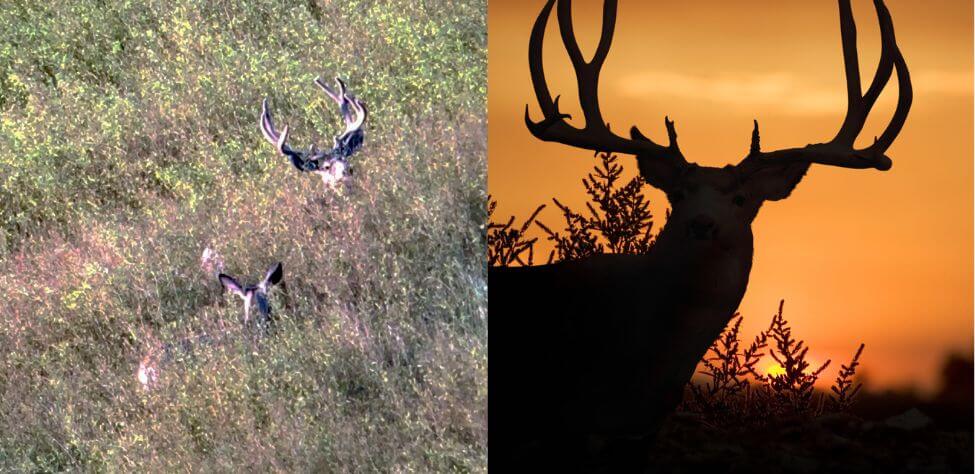
After he took an hour’s nap, he got up and started walking down the same trail that he had walked to reach his bedding site. This time, when the buck got to that 52-yard spot that I had ranged earlier, he stopped precisely at where I’d ranged. I got up on my knees in a reasonably windy breeze. I usually practiced shooting my bow out to 100 yards, so I felt confident that I could make the shot. I was drawing my Elite Ritual Bow back with my fixed-blade mechanical Rage broadhead, and I anchored my shot.
Just about reaching my anchor point, the buck looked right at me, and I squeezed the trigger on my mechanical release. I knew I had a high-angle shot because I was high above the buck. As I watched the arrow fly, I feared the buck would squat before jumping, and my arrow would fly over his back. But I heard a loud thud that sounded like someone had been hit with a big 2×4. The buck ran up the hill, and I saw the arrow in him. The buck circled, came into the drainage, and fell over almost exactly where I’d taken the shot. Later, I found that I had hit him right behind the shoulder and a little high due to the steep angle from which I was shooting. The arrow double-lunged the buck. I was somewhat surprised the wind hadn’t pushed my arrow off my target slightly.
When I walked off the lip of the drainage down into the bottom, the grass there was pretty tall. So, I had some trouble finding him. Once I finally located him, I put my backpack beside him, took a picture, and sent it to Dominic, who was supposed to be hunting that day, with a quote that said, “Do you recognize this buck?” I immediately got a text from Domanic saying, “I can’t believe you shot my buck!” Luckily, Dominic didn’t live far from where I was hunting. Since he wanted to see the buck up close and personally, he brought his four-wheeler into the drainage and helped me get the buck out. By the time Domanic had arrived 30 minutes after I had called him, I had already field-dressed the buck and dragged him to an opening to make loading the buck into the four-wheeler easier.
I’ve learned over the years that when hunting mule deer, you have to develop a respect for patience. Often, mule deer on the prairie will bed in an undercut on the side of a drainage. If you try to get in close enough to take a shot with your bow, nine times out of 10, you’ll spook the buck. If you’re going on your first mule deer hunt or getting frustrated because you’re spooking more bucks than you’re taking, I’ve found that letting the buck dictate how the hunt goes and being patient enough to let him decide when and where you’ll take him often will allow you to harvest more bucks than you spook.

Tomorrow: Hunting a Muley Deer That’s Too Close

